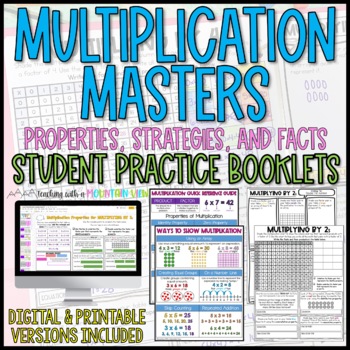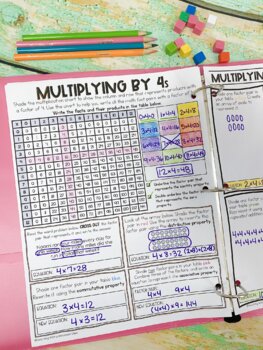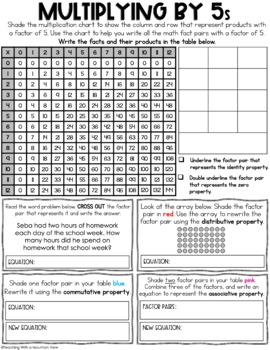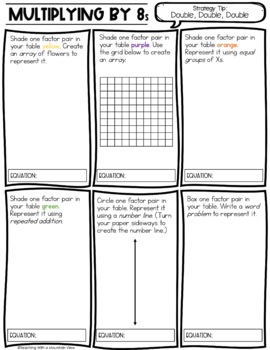Multiplication Fact Practice | Fact Fluency | Teaching Multiplication Properties
- Zip
- Google Apps™

What educators are saying
Also included in
- Get ready to take engagement to the next level with these multiplication and division activities that are just perfect for 3rd grade. Are you learning about multiplication and division strategies? Do you need activities that are SO easy to prep and teach? This is the bundle for you!Help your studentPrice $39.99Original Price $62.27Save $22.28
Description
Are your students ready to master multiplication? I designed this multiplication fact practice resource for students to master their strategies, facts, and multiplication properties.
This resource includes:
- Multiplication Properties Quick Reference Guide
- Ways to Show Multiplication Quick Reference Guide
- Printable Fact and Strategies Practice Book for facts 2-12
- DIGITAL, interactive version in Google Slides
- Suggested Answer Key
- Cover Pages to make student booklets
Differentiation: This resource includes two options for use: One set reviews properties and strategies. A second version does not include the properties for easy scaffolding and differentiation. Please see the preview for more information.
The Version WITH Multiplication Properties Reviews:
- Identity Property of Multiplication
- Zero Property of Multiplication
- Commutative Property of Multiplication
- Associative Property of Multiplication
- Distributive Property of Multiplication (using arrays)
BOTH Versions Review:
- Using a multiplication chart to find patterns and products
- Creating arrays
- Repeated Addition
- Using a Number Line
- Equal Groups
- Skip Counting
- Multiplication Word Problems
This resource is perfect for teaching, reteaching, practicing, or mastering multiplication math facts. You can use it as a teaching tool and complete it as you learn about the properties and ways to show multiplication, or students can complete it as a review to practice math facts.
Answer Key Note: Please note that for many of the tasks, students select the fact they want to model. For this reason, a complete answer key was not possible. I did, however, include an answer key for all the math facts and the tasks that had concrete answers.
Looking for even more Multiplication Resources?






